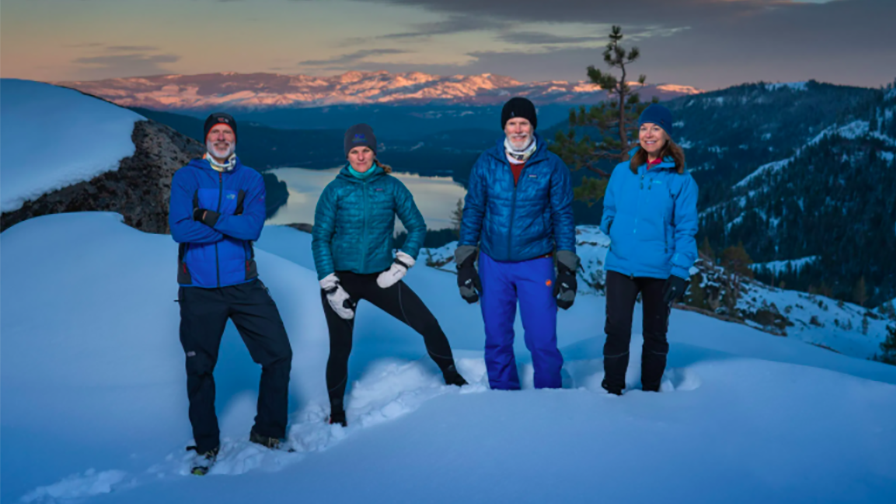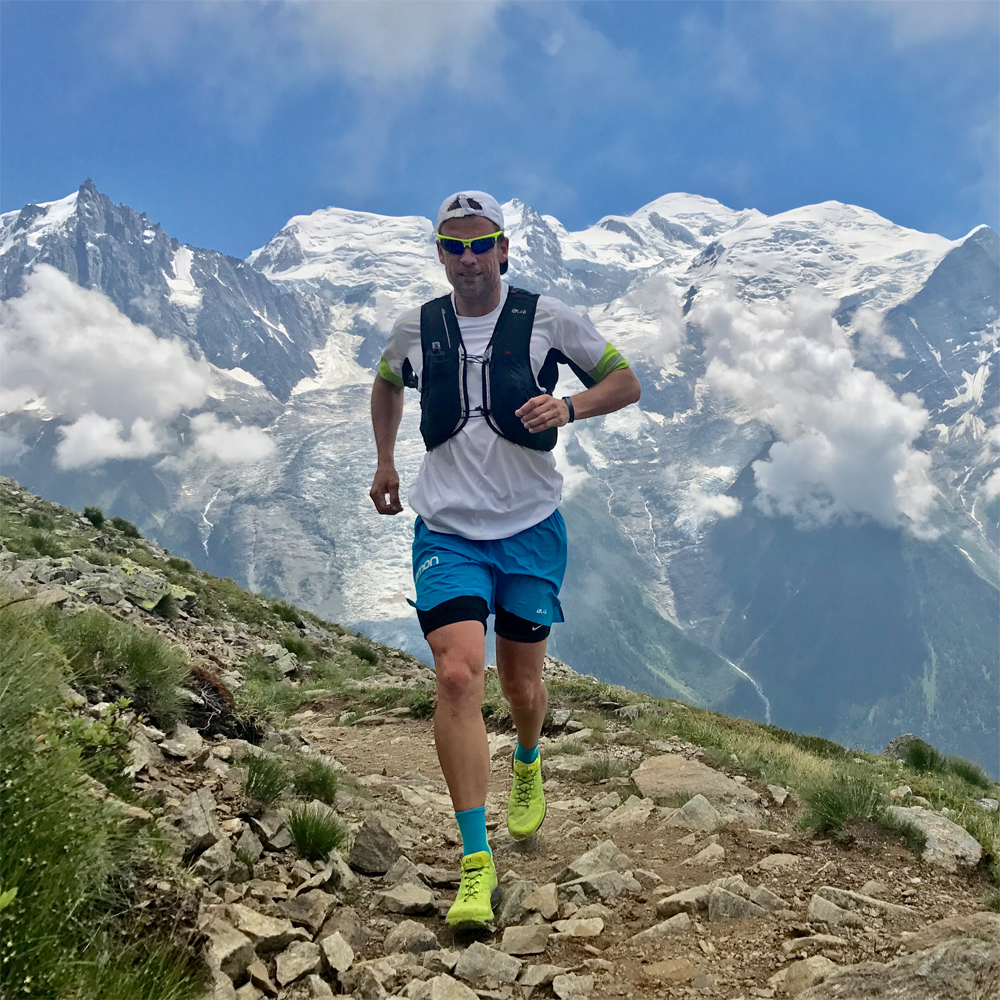Ultrarunners to retrace the deadly 100-mile American pioneer trail of Forlorn Hope
Meet the ultrarunners rediscovering the route of the fateful pioneer voyage of 1846 – and then running it

Two veteran California ultrarunners with a passion for exploring trails have discovered an American historical route that has remained a mystery for 174 years. And now they’re planning to retrace that fateful, 100-mile route.
Bob Crowley and Tim Twietmeyer have meticulously plotted the course taken by the group of 17 members of the Donner Party in their attempt to reach Sacramento, California, with the hope of saving the 87 members of the pioneer wagon train party trapped by snow at the eastern side of the Sierra Nevada mountain range in December 1846.
On December 16, exactly 174 years after the original group departed on its fateful journey, Twietmeyer, Crowley and fellow accomplished ultrarunners Jennifer Walker Hemmen and Elke Reimer will set off on foot from Donner Lake Memorial State Park and retrace the route to the historic site of Johnson’s Ranch. They will brave the elements with modern wilderness and camping gear and be tracked by GPS during their Forlorn Hope Expedition.
“As I’ve read the account of the Forlorn Hope and then traveled in their footsteps it has only galvanized my belief this might be the greatest endurance trek in history,” says Twietmeyer, a five-time winner of Western States 100 Mile Endurance Run and the only person to finish 25 times in under 24 hours.
- Keep yourself warm with the best down jackets and puffers you can buy
- Find out if you could you take on Americas toughest trail races
- How to love winter running: our guide will get you out in the cold
The Donner Party was a group of American pioneers seeking a better life in California during the mid-19th century period of westward expansion known as Manifest Destiny. Their wagon train arrived late in the season and winter storms overcame them before they were able to pass up and over the mountains. They were forced to hunker down and survive with dwindling provisions and little protection from the elements.
The group of 17 who left in search of help was dubbed The Snowshoe Party and later renamed Forlorn Hope by historians. They left Truckee Lake (now known as Donner Lake) on the morning of December 16, 1846. The group consisted of 10 men, five women and two boys. The youngest member of the party was 10 and the oldest was 57. They were farmers, tradesmen, housewives and children, but none were experienced in wilderness travel in the winter.
The Forlorn Hope team expected it would take six to eight days to reach Sutter’s Fort roughly 40 miles away in Sacramento. But they would have to cross the summit of the Sierra Nevada mountain range, which included several 7,000-foot peaks and snow up to 30 feet deep. They fashioned handmade snowshoes out of what was available and set forth with six days of rations of dried meat, the clothes on their back and some wool blankets.
Within days, the party to become lost and encountered inclement weather. A 100-year snowstorm descended and devastated the group. Only seven people survived to reach Johnson’s Ranch near Wheatland, California, 33 days later. They’d been without food for up to six days at a time, suffered severe frostbite, were exposed to hypothermia, had feet ravaged and forced to engage in cannibalism to survive.
The first rescuers from Sacramento didn’t reach the rest of the people in the trapped wagon train until the middle of February 1847, almost four months after they became trapped. Of the 87 original members of the party, only 48 survived the ordeal – including seven from the Snowshoe Party. Historians have described the episode as one of the most spectacular tragedies in California history, and in the entire record of American westward migration.
Crowley and Twietmeyer, who live in Northern California and have been ultrarunning for more than four decades, share a passion for narrative history. With an impressive list of trail running achievements to their credit, they’ve sought new adventures and dreamed up the concept of combining trail running with history. They’ve spent seven years doing research, fieldwork and analysis of the route taken by the Forlorn Hope Expedition.
The idea became a reality after Twietmeyer and Crowley read a book passage describing the journey of the Forlorn Hope group and realizing it happened right in their backyard. What began as a mission to discover the path of the Forlorn Hope, then developed to reprise the journey and provide new historical context. After delving into academic research, trail discovery and topography, Twietmeyer and Crowley became obsessed with becoming more familiar with the Forlorn Hope members.
“Whereas many people know about the Donner Party and fewer know about the Forlorn Hope, the memorable part of both stories is the cannibalism,” says Bill Oudegeest, a board member of the Donner Summit Historical Society who has been a partner with Crowley and Twietmeyer throughout the project. “For most, there the story ends, leaving out the heroism and human nature fighting the elements. There is so much more and these four athletes want to change the narrative. Their re-creation of the Forlorn Hope journey will bring the story back to the public’s attention and, with it, the real story about these amazing people who risked their lives for their families.”
Crowley hopes the focus of this dark historical story can shift to the “perseverance, passion and grit, as well as the motivation, ruggedness and resilience of these normal people” who accomplished extraordinary feats to try to survive and who, he says, embodied the many core characteristics and tenets that became the backbone of America in the late 19th century and early 20th century
The modern Forlorn Hope Expedition team is seeking to partner with federal, state and local entities to create a learning center for children and adults dedicated to the history of the Donner Party. They’ve established a website at www.forlornhope.org to view more details about the Expedition, maps, history and details on how to track the Forlorn Hope Expedition team on their journey.
Advnture Newsletter
All the latest inspiration, tips and guides to help you plan your next Advnture!
Brian is an award-winning journalist, photographer and podcaster who has written for Runner’s World, The Times, Outside, Men’s Journal, Trail Runner, Triathlete and Red Bulletin. He's also the author of several books, including Kicksology: The Hype, Science, Culture and Cool of Running Shoes. He lives in Boulder, Colorado, and loves to run, bike, hike, camp, ski and climb mountains. He has wear-tested more than 1,500 pairs of running shoes, completed four Ironman triathlons, as well as numerous marathons and ultra-distance running races.

